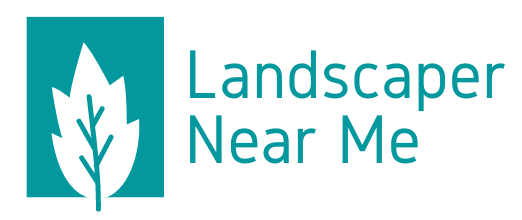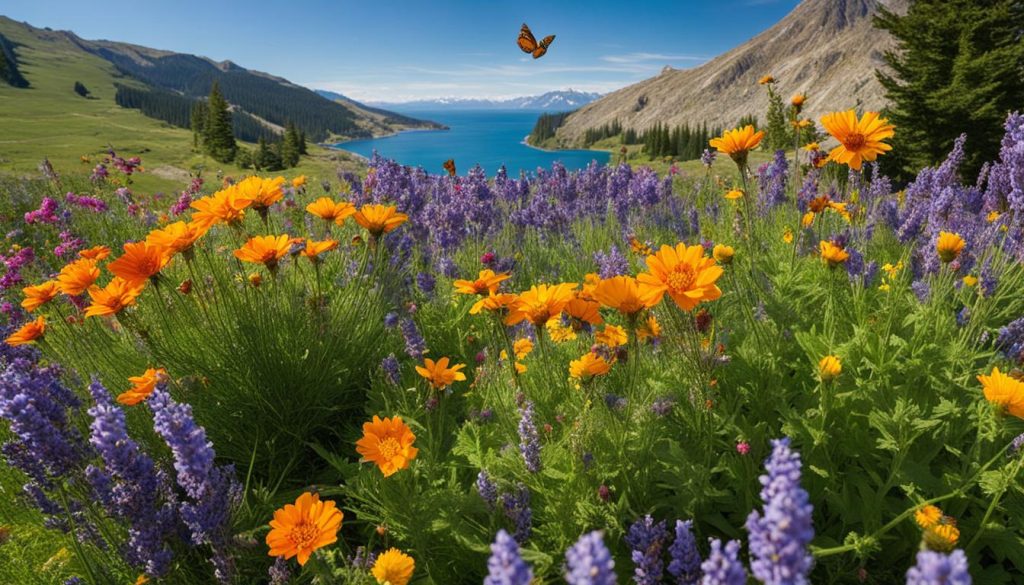Welcome to our guide on pollinator-friendly landscaping for your Canadian garden! What exactly is pollinator-friendly landscaping, you ask? It’s the art of creating a garden that is not only beautiful but also inviting to the hardworking bees and butterflies that play a critical role in our ecosystem. By incorporating certain plants, design techniques, and maintenance practices, you can create a haven for these important pollinators right in your backyard.
Our team specializes in creating stunning landscapes that attract bees and butterflies while still reflecting your personal style. We believe that a thriving garden is not only visually appealing but also beneficial to the environment, and we are thrilled to share our expertise with you.
In this section, we’ll dive deeper into what it takes to create a pollinator-friendly garden. From selecting the right plants to incorporating design techniques that appeal to bees and butterflies, we’ll cover everything you need to know to create a space that is both beautiful and eco-friendly. Let’s get started!
Creating a Welcoming Habitat for Pollinators
At Landscaper Near Me, we understand the importance of creating a welcoming habitat for pollinators in your garden. By incorporating native plants, providing essential water sources, and designing your landscape with pollinators in mind, you can create a haven for bees and butterflies.
Native Plants
Native plants are a key element of a pollinator-friendly habitat. These plants have evolved with the local ecosystem and are therefore better suited to attract and support native pollinators. Incorporating a variety of native flowers, shrubs, and trees into your garden will provide a source of food and shelter for bees and butterflies.
- Some recommended native plants for pollinators in Canada include:
- Wild Bergamot
- Butterfly Weed
- Purple Coneflower
- Wild Geranium
- Red Columbine
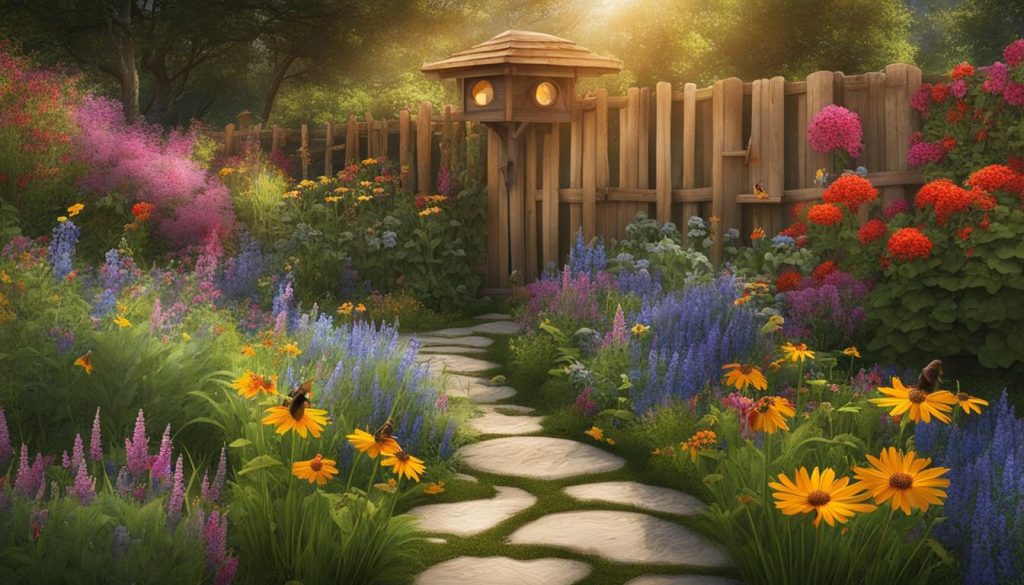
Water Sources
Providing a source of water is another important aspect of creating a pollinator-friendly habitat. Bees and butterflies need water to drink and to cool down on hot days. You can add a birdbath or a shallow dish of water with rocks for landing to your garden to provide a water source for pollinators.
Designing for Pollinators
Designing your landscape with pollinators in mind can maximize its appeal to bees and butterflies. Using a variety of colors and fragrances will help attract pollinators to your garden. Consider planting in clusters, as this is more appealing to pollinators than planting in rows. You can also incorporate elements like log piles and rock piles to provide additional shelter for bees and butterflies.
By following these tips and incorporating native plants, providing water sources, and designing with pollinators in mind, you can create a welcoming habitat for bees and butterflies in your garden.
Choosing the Right Plants for Pollinators
At Landscaper Near Me, we understand the importance of selecting the right plants to attract pollinators to your garden. Providing an attractive food source is essential for the survival of bees and butterflies so choosing the right plants is crucial. Let us guide you on which plants to include in your garden to create a thriving habitat for pollinators.
Nectar Plants
Nectar-rich flowers are a must-have in any pollinator garden. Bees and butterflies need a reliable source of nectar for food, and by planting nectar-rich flowers, you can create an inviting habitat for them.
- Butterfly bush (Buddleja spp.): This shrub produces fragrant blooms that attract butterflies and bees.
- Coneflowers (Echinacea purpurea): Coneflowers produce long-lasting purple and pink flowers that attract bees and butterflies.
- Bee balm (Monarda spp.): This plant produces bright red, pink, and purple flowers that are irresistible to bees and butterflies.
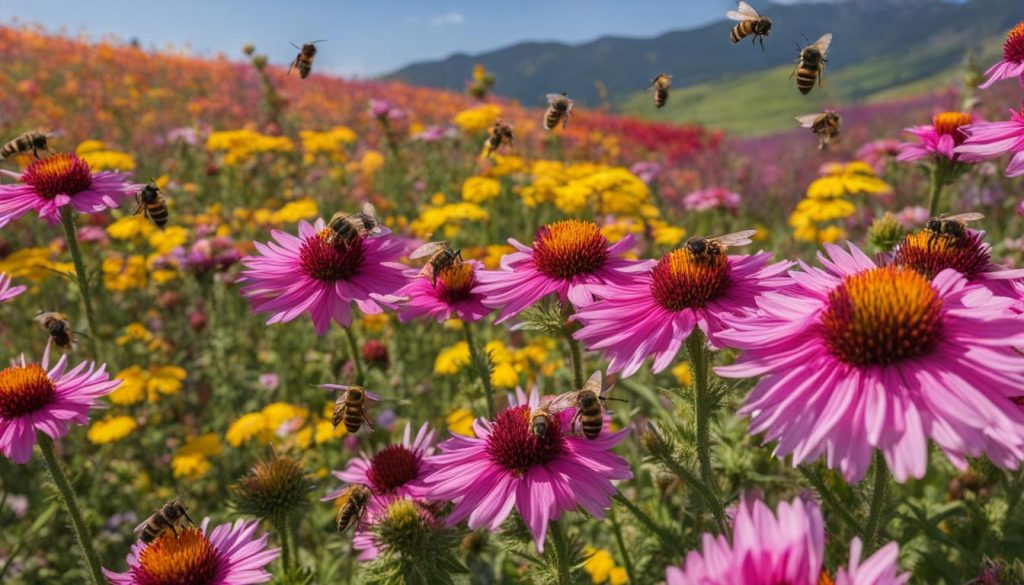
Host Plants
Host plants are important for supporting the lifecycle of pollinators. Caterpillars of butterflies and moths need specific plants on which to lay their eggs and feed their young, so including these plants in your garden is critical to creating a welcoming habitat.
- Milkweed (Asclepias spp.): This plant provides food for monarch butterfly larvae and is essential for supporting their life cycle.
- Parsley (Petroselinum crispum): The leaves of parsley provide food for black swallowtail caterpillars.
By including both nectar and host plants in your garden, you are creating a complete habitat that offers food and shelter for pollinators. At Landscaper Near Me, we specialize in designing and planting pollinator-friendly gardens that are both beautiful and environmentally sustainable.
Incorporating Pollinator-Friendly Design Techniques
Design techniques can play a crucial role in attracting and supporting pollinators in your garden. By strategically incorporating color, fragrance, and planting patterns, you can create a beautiful and inviting habitat for bees and butterflies.
Using Color and Fragrance
One effective way to attract pollinators is through the use of color and fragrance. Planting a variety of brightly colored flowers, such as purple coneflower or bee balm, can catch the attention of bees and butterflies. Fragrant plants like lavender or bergamot can also be attractive to pollinators.
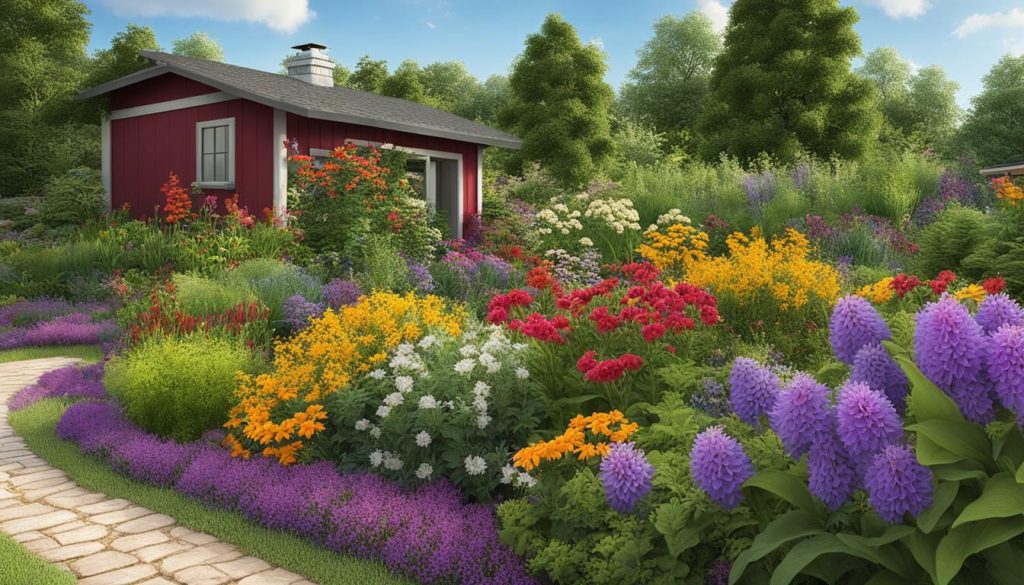
It’s important to consider the seasonality of these plants when incorporating them into your garden. For example, planting early-blooming crocuses can provide much-needed food for bees emerging from hibernation in the spring, while late-blooming asters can offer sustenance as cooler temperatures set in.
Create Planting Patterns
Planting patterns can also be used to attract and support pollinators. Bees and butterflies are attracted to clusters of flowers, so planting several of the same species in one area can be effective. Additionally, incorporating a variety of plant heights and textures, such as tall sunflowers and low-growing creeping thyme, can create a diverse and attractive environment for pollinators.
Another effective planting pattern is to include host plants, which are essential for supporting the life cycle of butterflies. For example, monarch butterflies rely on milkweed plants to lay their eggs and feed their larvae. By including milkweed in your garden, you can help support the survival of this species.
By incorporating these design techniques into your garden, you can create a beautiful and welcoming habitat for pollinators. Contact us at Landscaper Near Me to learn more about how our professional landscaping services can help you create a stunning and pollinator-friendly Canadian garden.
Maintenance Tips for a Thriving Pollinator Garden
Caring for your pollinator garden is crucial to ensure a healthy habitat for bees and butterflies. Here are some maintenance tips to help your garden thrive:
Garden Maintenance
Regular maintenance is important to keep your garden healthy and visually appealing. Remove dead leaves and flowers to promote new growth and prevent pest problems. Cut back overgrown plants and prune shrubs to maintain the desired shape and size.
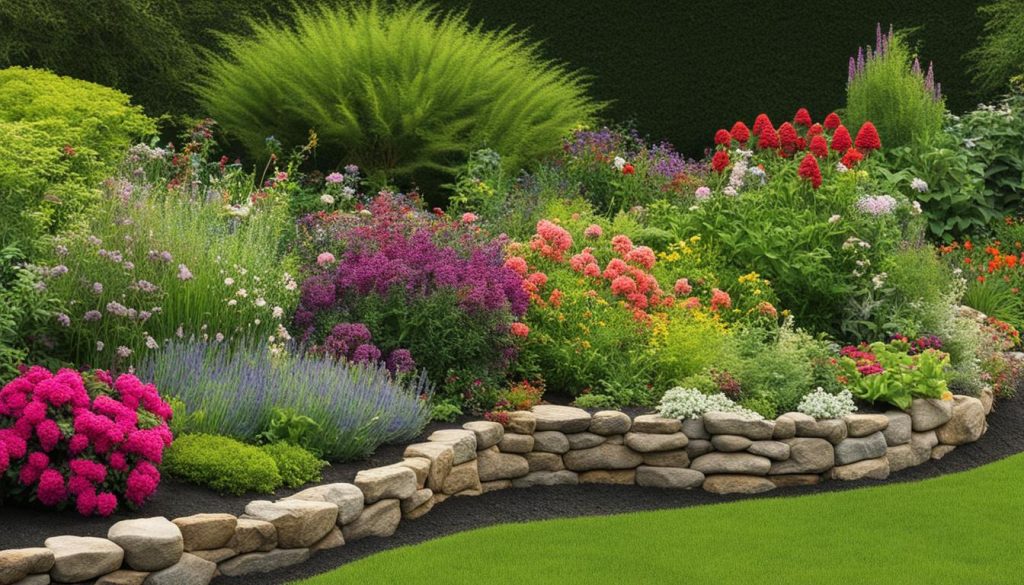
Pest Control
Pests can damage your garden and harm pollinators. Use natural pest control methods like companion planting, insecticidal soaps, and neem oil. Avoid using pesticides as they can be harmful to bees and butterflies.
Seasonal Care
Different seasons require different care for your garden. In the spring, remove debris and mulch to promote healthy growth. In the summer, water your garden regularly and provide shade for delicate plants. In the fall, clean up fallen leaves and debris to prepare for winter.
By following these maintenance tips, you can create a healthy, vibrant habitat for pollinators to thrive in. Remember, a little care goes a long way in creating a pollinator-friendly garden!
Landscaper Near Me: Your Partner in Pollinator-Friendly Landscaping
At Landscaper Near Me, we are committed to creating beautiful, sustainable landscapes that support pollinators like bees and butterflies. Our professional landscaping services can help you transform your Canadian garden into a haven for these important creatures.
We understand the importance of pollinator-friendly landscaping and the benefits it brings to our environment. That’s why we use native plants and design techniques that attract and support bees and butterflies, enhancing the beauty of your outdoor space while promoting biodiversity.
Professional Landscaping Services
Our team of experienced landscapers provides a range of services to help you create a thriving pollinator garden. From designing a custom landscape plan to installing native plants and providing ongoing maintenance, we are committed to partnering with you to create a sustainable, beautiful outdoor space.
We work closely with our clients to understand their unique vision and needs, ensuring that every project is tailored to their specific requirements. Our team is dedicated to providing exceptional service and delivering results that exceed your expectations.
Contact Us Today
If you’re ready to create a pollinator-friendly landscape that enhances the beauty of your outdoor space, contact us today at (647) 812-8469. We would be happy to discuss your landscaping needs and provide a free consultation to get started.
At Landscaper Near Me, we are passionate about creating sustainable, beautiful outdoor spaces that benefit the environment and enhance the lives of our clients. Let us be your partner in creating a pollinator-friendly garden that you can enjoy for years to come.
FAQ
What is pollinator-friendly landscaping?
Pollinator-friendly landscaping refers to creating a garden or outdoor space that is designed to attract and support pollinators such as bees and butterflies. It involves incorporating native plants, providing essential water sources, and creating a welcoming habitat for these important insects.
Why is pollinator-friendly landscaping important?
Pollinator-friendly landscaping is crucial for the health and survival of pollinators. Bees and butterflies play a vital role in pollinating plants, which helps with the production of fruits, vegetables, and seeds. By creating a welcoming habitat for pollinators, we can help ensure their populations thrive and contribute to a more balanced ecosystem.
What are some native plants that attract bees and butterflies?
Some native plants that attract bees and butterflies include milkweed, coneflowers, bee balm, and butterfly weed. These plants provide a rich source of nectar and act as host plants for butterfly larvae. Incorporating a variety of native plants in your garden will help attract and sustain pollinators.
How can I incorporate color and fragrance to attract pollinators?
To attract pollinators, choose plants with vibrant colors like purple, blue, and yellow. Bees and butterflies are particularly attracted to these hues. Additionally, consider incorporating plants with fragrant flowers as they can be irresistible to these insects.
What are some maintenance tips for a pollinator garden?
To maintain a thriving pollinator garden, it’s important to practice good garden maintenance. Regularly remove weeds, provide adequate water, and keep an eye out for pests. Avoid the use of harmful pesticides, as they can harm pollinators. Additionally, consider planting a variety of flowers that bloom throughout different seasons to provide food for pollinators year-round.
How can Landscaper Near Me help with pollinator-friendly landscaping?
At Landscaper Near Me, we specialize in creating pollinator-friendly landscapes. Our professional landscaping services can help you design and maintain a garden that attracts bees and butterflies. Contact us at (647) 812-8469 to learn more about how we can transform your Canadian garden into a haven for pollinators.
